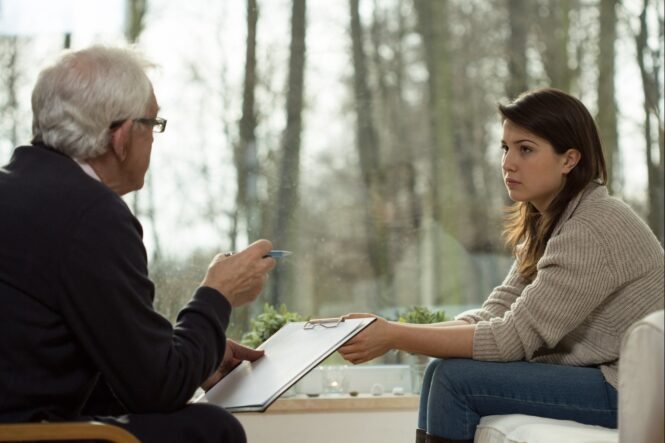CBT is about changing established patterns of behavior which can cause problems individually but can be particularly potent in a relationship. Breaking down and mending entrenched behavioral patterns will have a big impact on the couple’s setting. Often these two people have reached an impasse where they can neither go forward nor backward, they are trapped by the repetitious nature of their established behaviors toward one another.
Rather than feeling you are on track to head over the waterfall in an out of control manner, CBT allows couples to take back some control, empowering them to put positive input into their relationship rather than negative. It offers a system to allow couples to move forward with positivity.
Having said that, it is not a wand-waving exercise and requires determination and commitment from both parties to be beneficial – more information about that here: https://www.carolinebronte.co.uk/marriage-couples-counselling
CBT orientation

One of the first things a therapist will seek to do is to orientate the couple to the concept and journey that is CBT. It is important that the process of CBT is understood at a rational level before the couple tries to engage with it. Most couples want to understand the journey they are about to embark on.
The therapist will explain the concept of how you can change the way you feel which is achieved by altering your thoughts and responses to a situation. He or she may use examples of this in a context away from relationships specifically so it might concern someone who has panic attacks when they fly or is suffering from insomnia. Once thoughts have changed, new feelings will come to the fore and change will begin.
It is important that couples understand what CBT is and which processes the therapist will use during the sessions.
Start with positivity
Many couples who seek relationship counseling sessions expect them to begin with a long list of complaints and problems. A good therapist will start the first session off on a positive note and ask each person individually to outline qualities and traits about their partner which they like, admire and respect. The idea is to set the first session within a framework of positivity. By using questions to draw out the right response, the therapist will create an upbeat environment in which to work.
The Nitty Gritty

Moving on from this pleasant start, the hard work comes when the couple is required to identify where their collective problems are. It’s hard to do this without it developing into a bitter series of recriminations and criticism. A good therapist will try and keep the focus on the areas that are causing the most stress. Experts at Better Hhese could be deeply personal issues or extraneous matters such as family interference, a health problem, changes or difficulties in employment or money worries.
What is really important is identifying how these problems make you feel, how do you react to them. The therapist’s role is to help both people understand how these behaviors have contributed to the current status quo. The idea is to seek out accuracy and honesty but it can be painful.
Setting goals for change
This is a really constructive and important part of the CBT process which your therapist can help you structure. Changes are made in steps, small enough to be achievable but significant enough to really impact on the relationship. There is lots of information available to read online about how CBT works and whether you think it could help your relationship. If you are curious about CBT and therapists who can provide more insight, you can refer to professional services at BetterHelp.
 Imagup General Magazine 2025
Imagup General Magazine 2025



